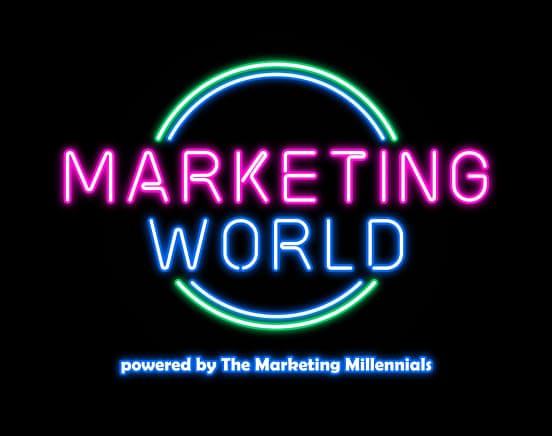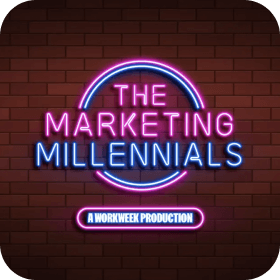I’m fired-up for you to meet today’s guest, Alexa Kilroy.
Currently the Head of Brand at Triple Whale, Alexa is a brand strategist who just gets it.
Keep sipping that morning brew and let’s see what brand performance GEMS Alexa dropped on The Marketing Millennials Podcast, in her own liiiightly edited words.
1. Brand marketing actually is:
“If you aren’t working in brand, it’s very easy to think of it as a combo of being a designer and copywriter.
They really care about tone of voice and copy on packaging, website, and blog posts. They’re focused on the visual aesthetics of the brand.
The reality is that’s only a tiny part of brand.
Brand is the experience that people have with you as a customer and the way that people perceive you in the market (YES).
I always give the example of Nordstrom. Why does Nordstrom feel like a luxury brand? Yes, they sell luxury products, but there’s an experience that you have when you go into a Nordstrom that’s very branded.
Plush carpets, nicer tier racks to put their shoes on, a coffee shop inside, and their tone of voice is a little bit classier than something you get from Macy’s.
So brand is very experiential.
When I started at Triple Whale, the core visual elements of the brand had already been done.
It was up to me to interview customers and understand what we do well as a company to evolve that into every sphere that we touch. Whether it be product experiences, customer service experiences, or social experiences.
Brand is much more of a consumer psychology experiential sphere, than an executional design sphere.
2. Making your brand stick out:
In marketing, you’re working with consumer psychology. You want consumers to absorb who you are, what you do, and get them passionate about your brand.
You need to learn from all the key stakeholders in the company and find what their North Star is.
Then interact with customers.
Meet with absolute advocates of your brand, active users, so-so users, and even people who no longer use your product or service (absolutely love this).
Level up your marketing game
Zero BS. Just fun, unfiltered, industry insights with the game-changers behind some of the coolest companies from around the globe.
No spam. Unsubscribe any time.
This gives you insight into what all those experiences were and what faults there were along the way.
Then build customer psychology based personas, to understand the different needs and types of users of your product.
Work to craft and optimize their various experiences based on what they’re looking for.
3. The importance of your customer relationship:
Your brand could have an amazing product, but the market has changed.
If you don’t offer your customers a styled customer experience, they’re going to get grumpy fast.
It’s not our fault and people’s behavior isn’t changing.
It’s because of brands like Amazon and DoorDash who found ways with their massive budgets to provide customer experiences that ensure people don’t get grumpy (this is incredibly accurate – LOL).
If your Amazon package doesn’t show up in time or it isn’t exactly what you wanted, you just get a refund. Same with DoorDash. You don’t like your food, you just get a refund.
So people’s perspective on what good customer service looks like, has changed drastically.
If you’re slacking on that side of your business, your retention is just going to be trash.
Now if you try to compensate for this shift by sending a billion different emails a day and touching customers too much, they will get annoyed.
(Think Black Friday, the number of emails you get is TOO MUCH.)
Being aware of what your relationship with customers looks like and making sure that it’s magical, will alter your entire business.
4. A massive shift in performance marketing:
There has been a massive shift in performance marketing.
Consumers don’t like fluffy ads anymore. They know what an ad looks like because they’re seeing them everywhere.
It’s on every single thing that they touch. Every website, email, and YouTube video.
And they also know what UGC and influencer content looks like.
Consumers at the stage where they just want you to tell them what you’re selling (get straight to the point!!).
They want you to tell them why it’s good and make them want to get it.
If you are running ads where you are trying to sell a product and you get curiosity clicks to your website, you’re wasting money on those curiosity clicks (this is a HOT take, but I’m here for it).
The reality is you don’t only want curiosity traffic on your site. You want to optimize for people who are very interested in your product.
That doesn’t mean there aren’t different ways you can message and visualize, but you want to put the product at the focus.
You can still have a juicy hook or cool visuals, but know that consumers are primed to buy from ads.
They know what they are, so give them what they need to make a decision, whether or not they want to click on your website and have high purchase intent.
That way you save creative testing budget, ad budget, and provide a better customer experience to get to the right people faster (Finance would LOVE to hear this).
5. Brand awareness advertising done right:
Now if you have a brand that nobody’s ever heard of, but your product makes people excited, it doesn’t matter that you have minimal brand awareness.
What matters in that stage is that when people get to your landing page, there’s enough authority there. It looks legit enough that consumers feel comfortable giving you their money.
It’s a conversion rate and social proof priority.
When thinking about brand awareness advertising as a whole, think more like an affiliate scope.
Get your brand in a catalog like The Strategist, a broad scope publication that already has high authority.
People trust what is listed in there (and trust is EVERYTHING).
It’s a good way to build brand awareness and tie it to a trusted authority, as opposed to trying to run ads that aren’t conversion oriented.
Don’t run general brand awareness or general traffic ads. Getting more people to know about your brand is important, but you need to make money, so be conversion focused (THIS).
Then leverage other brand awareness elements like authority positioning so you know your actual conversion source.”



